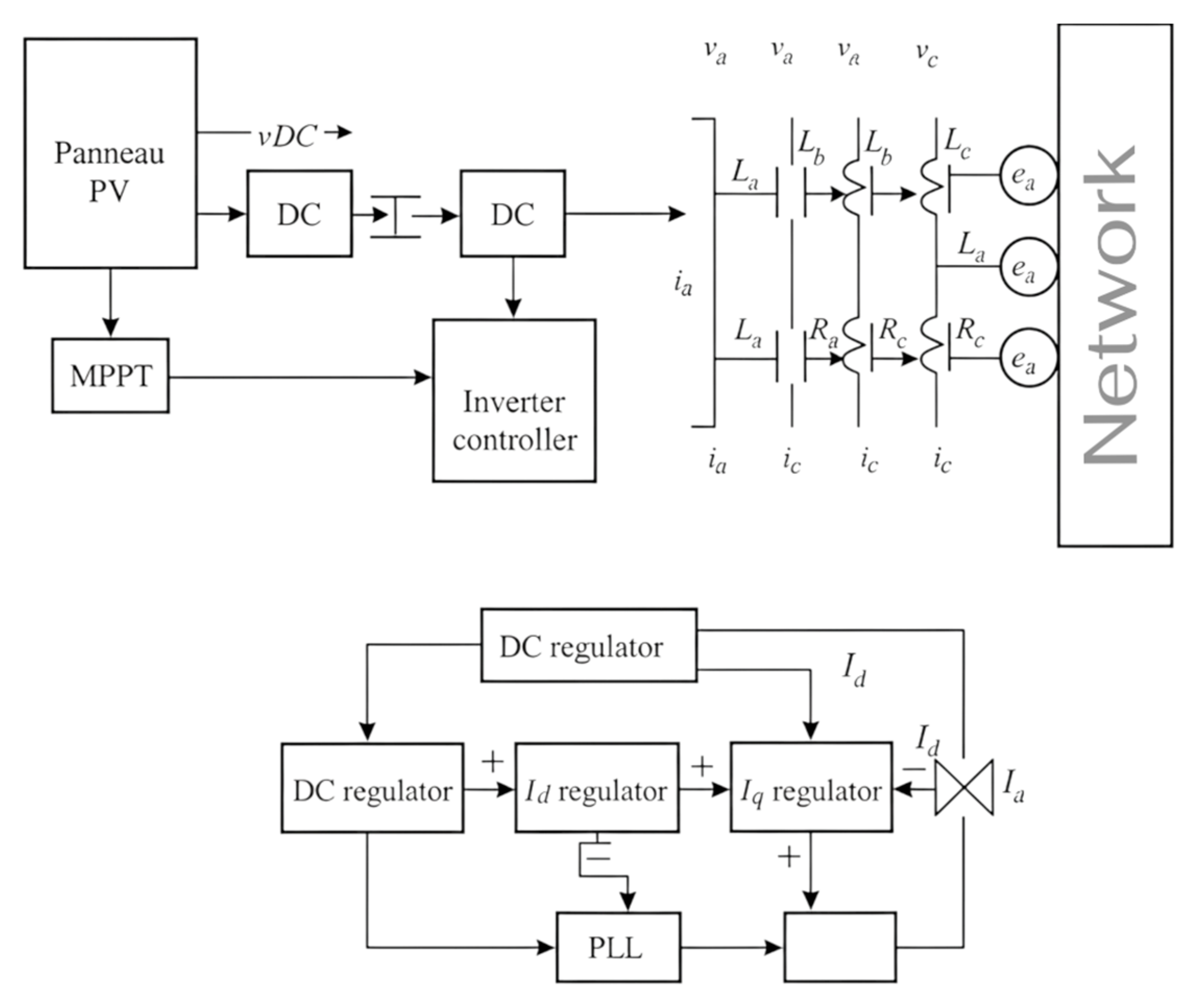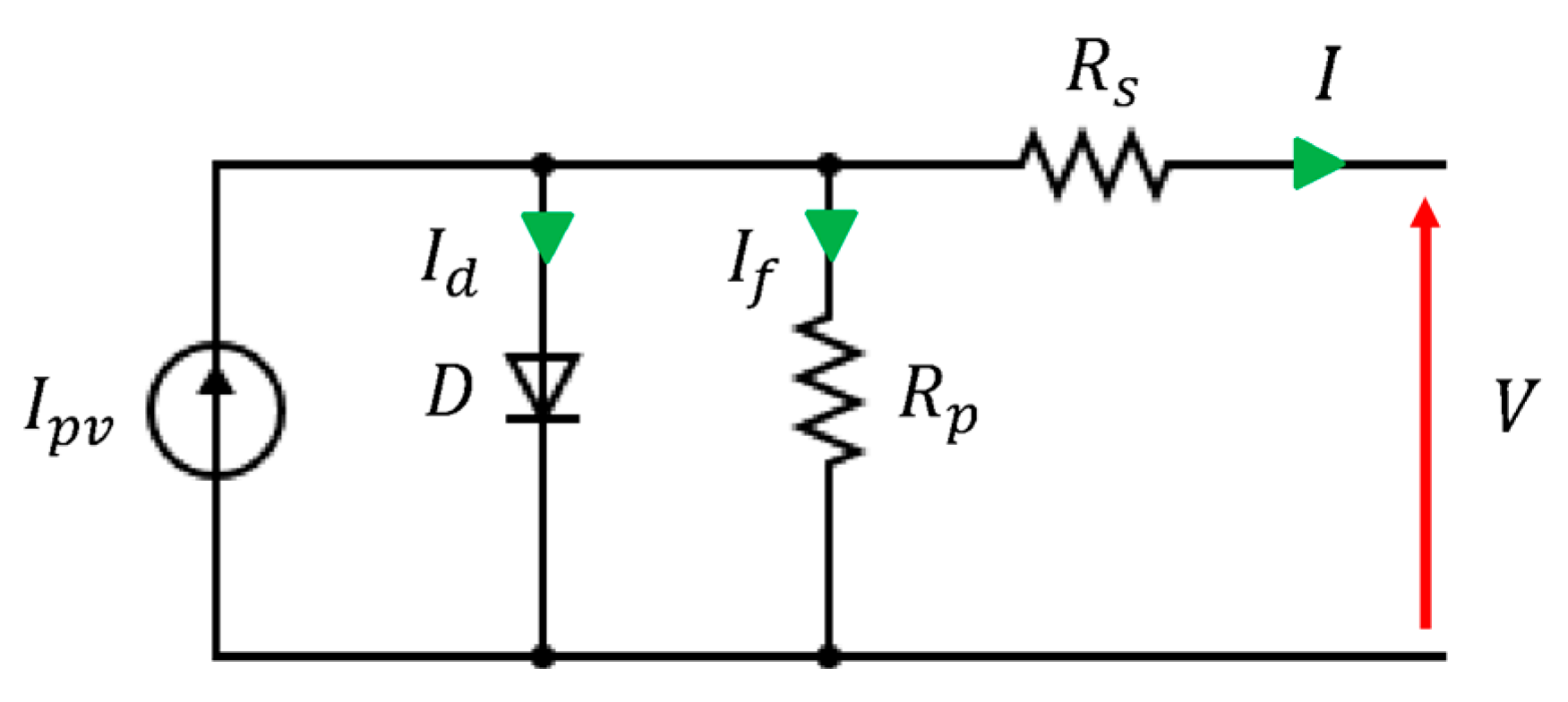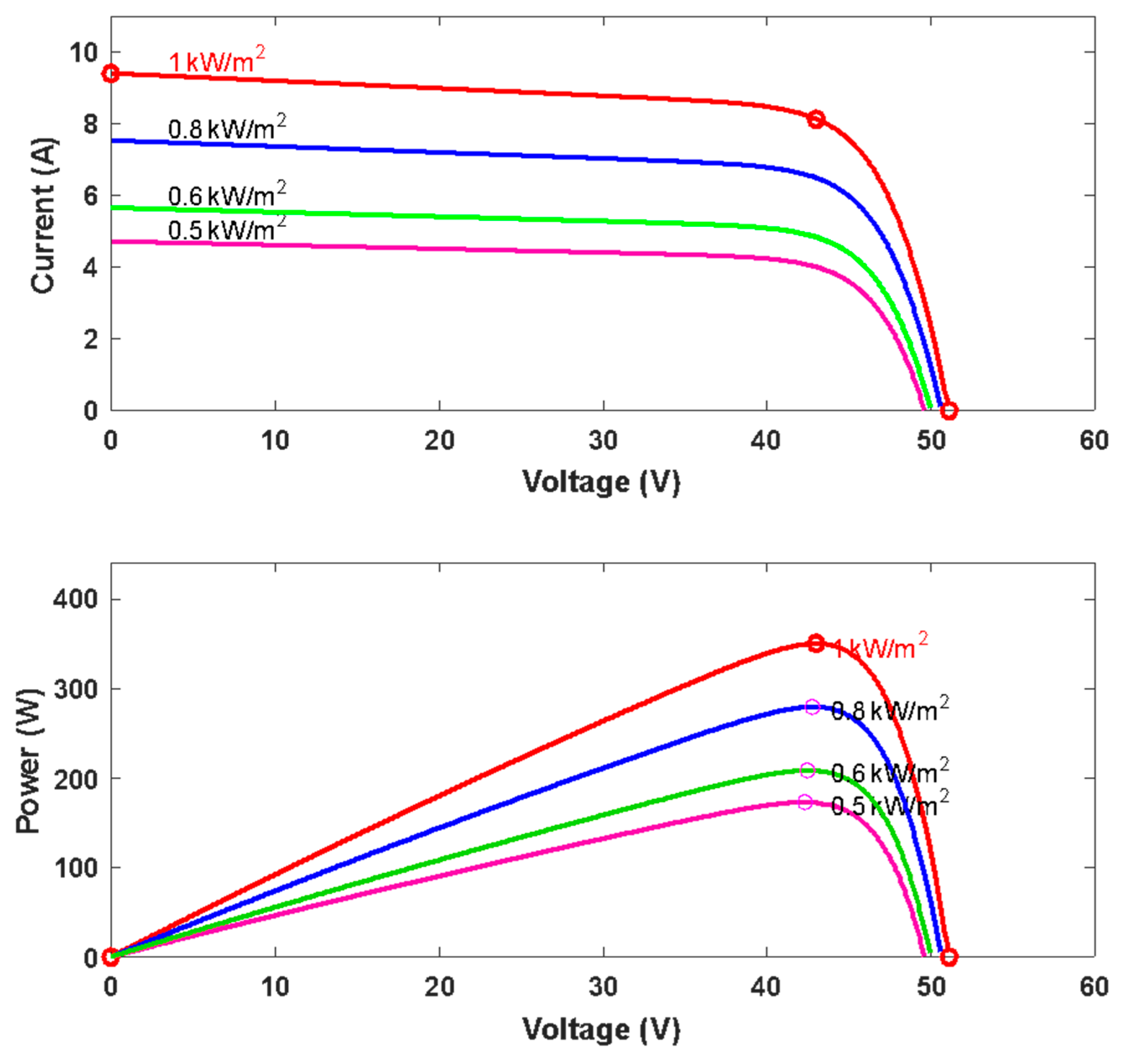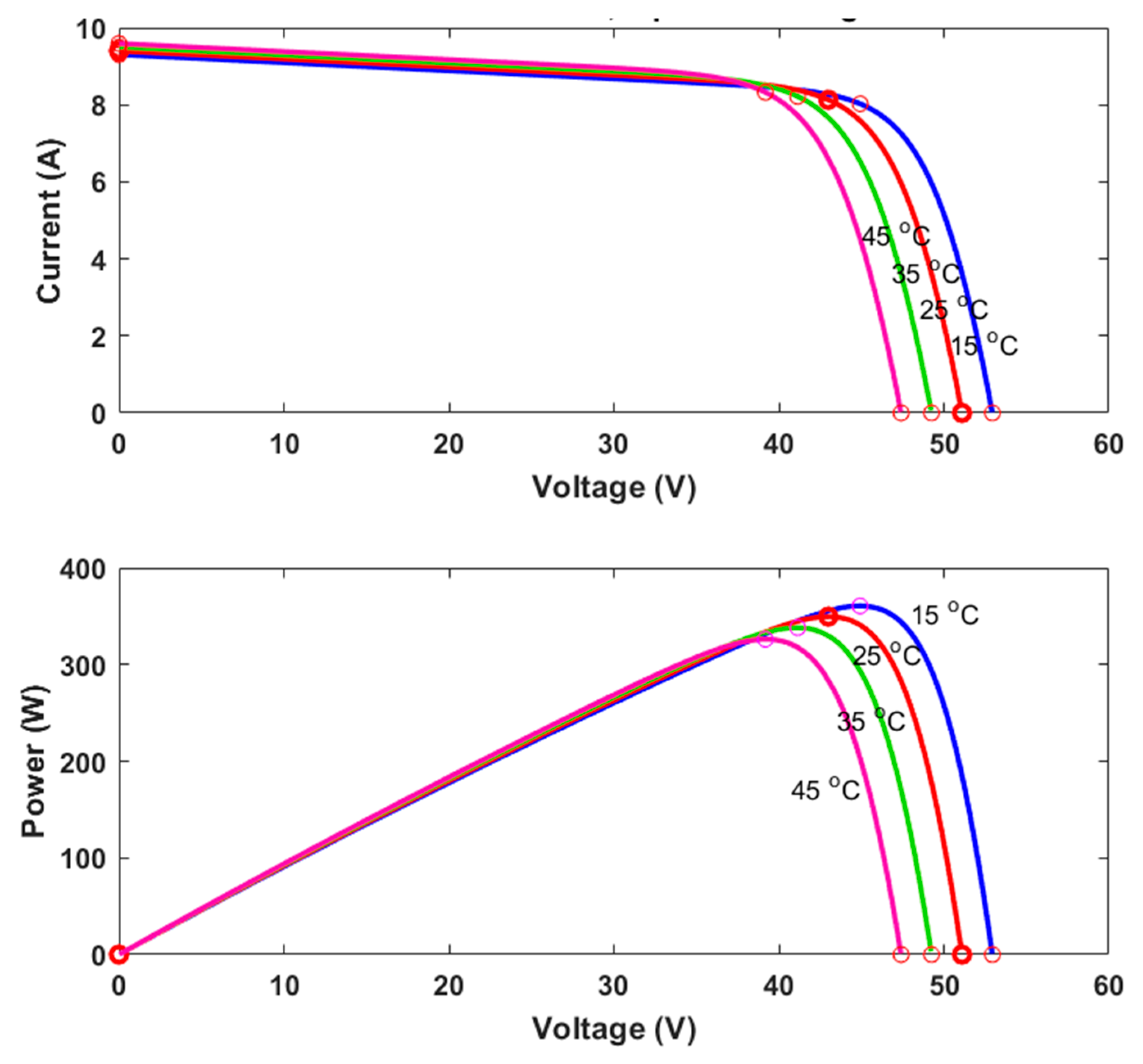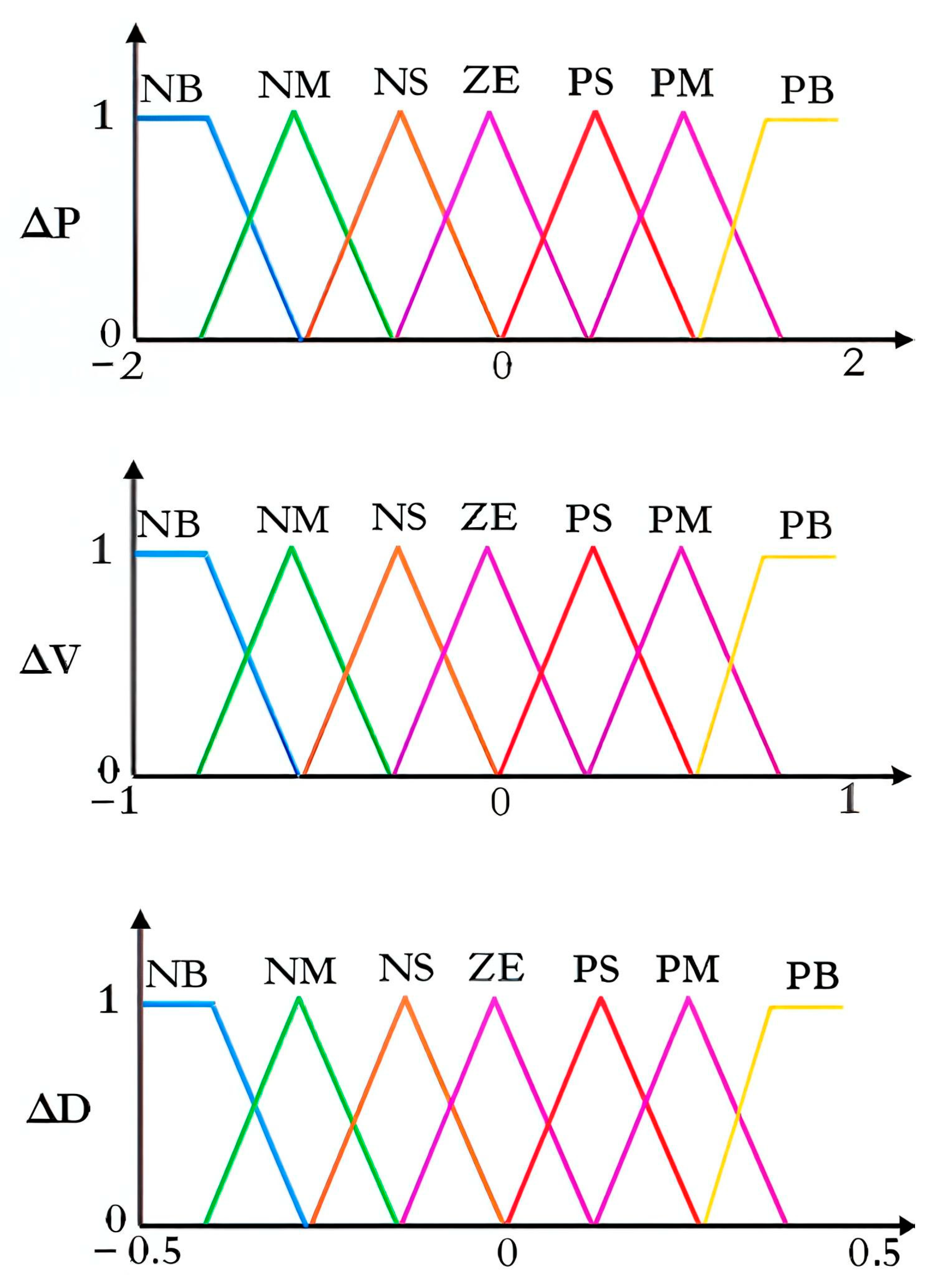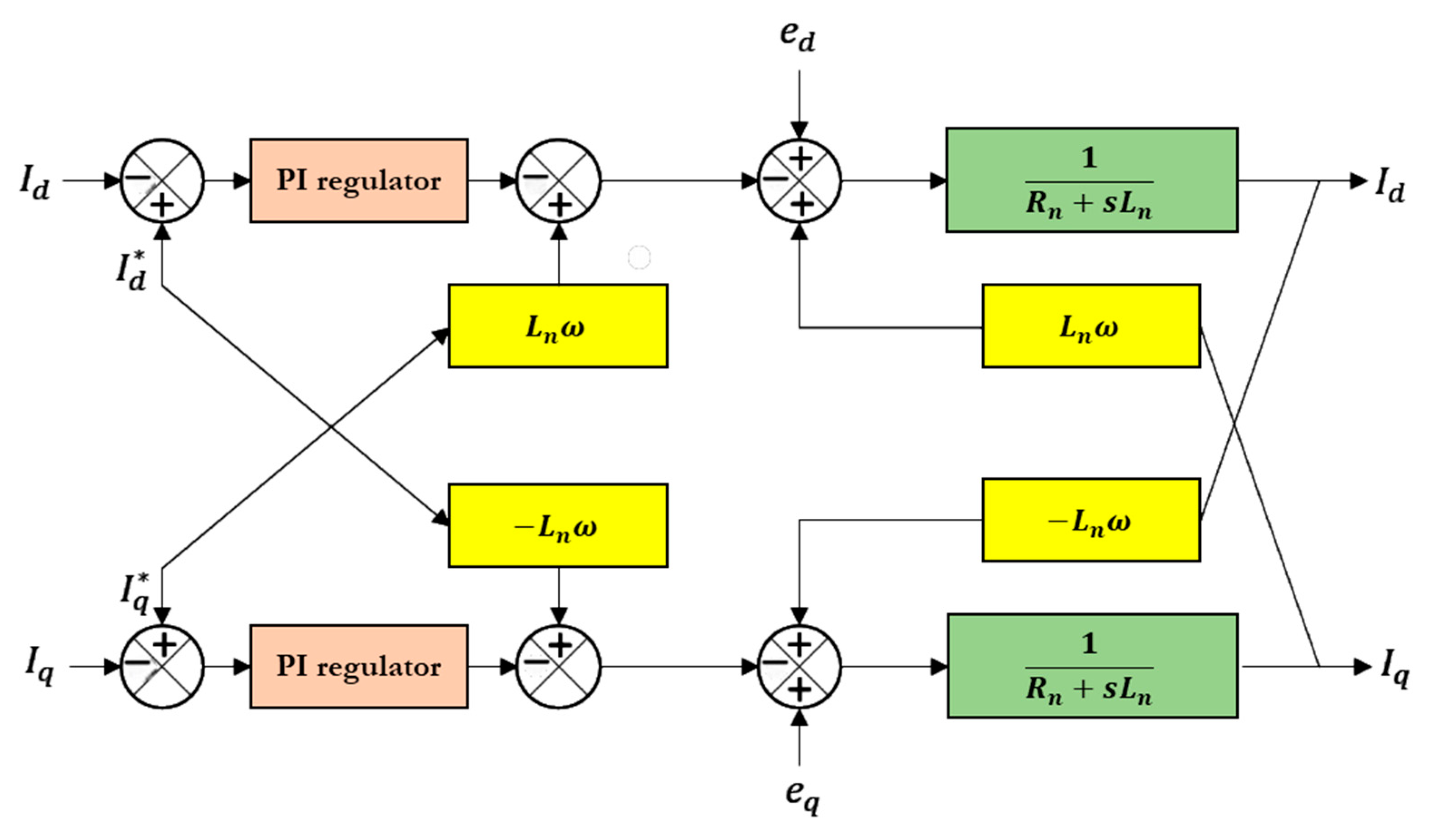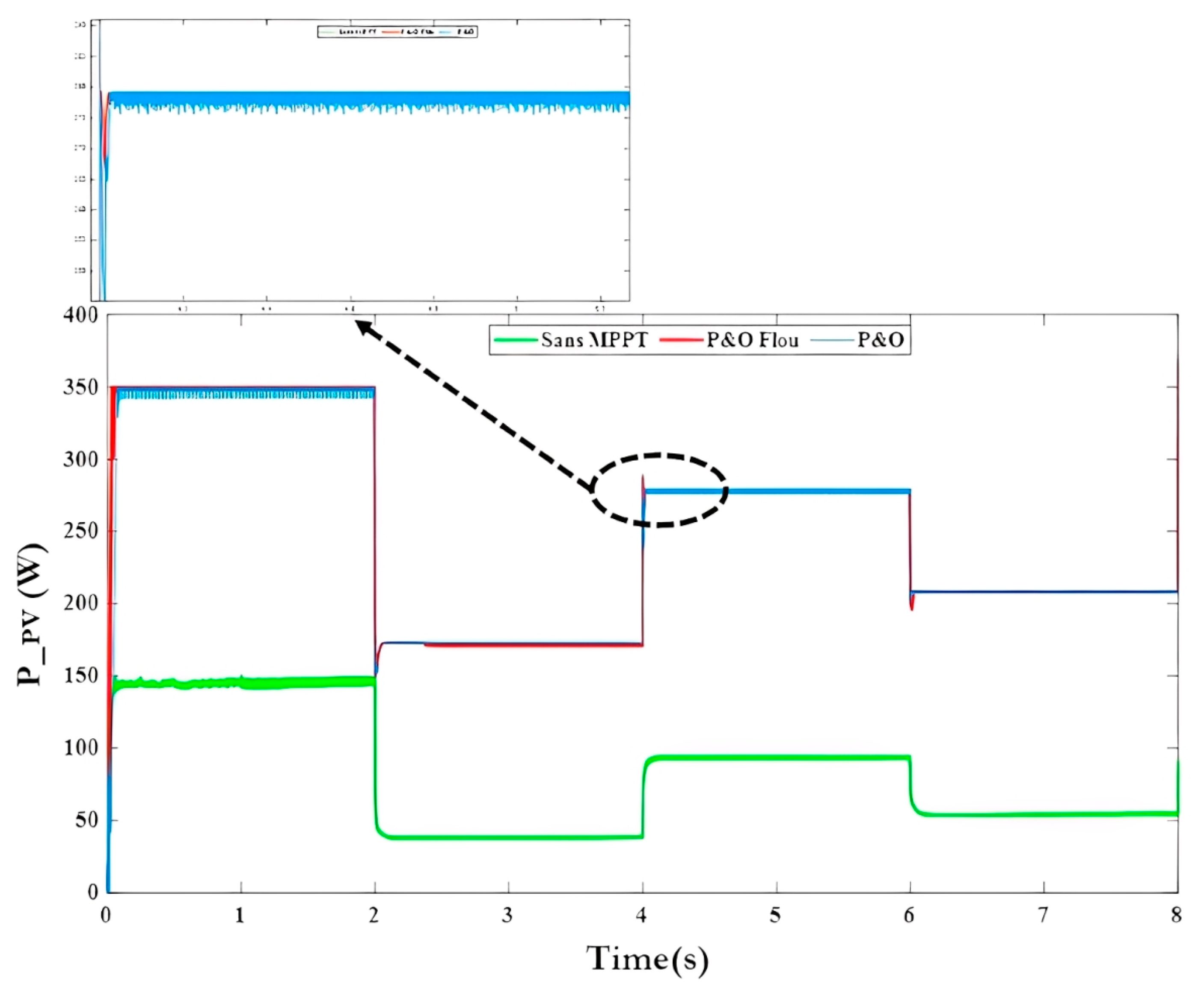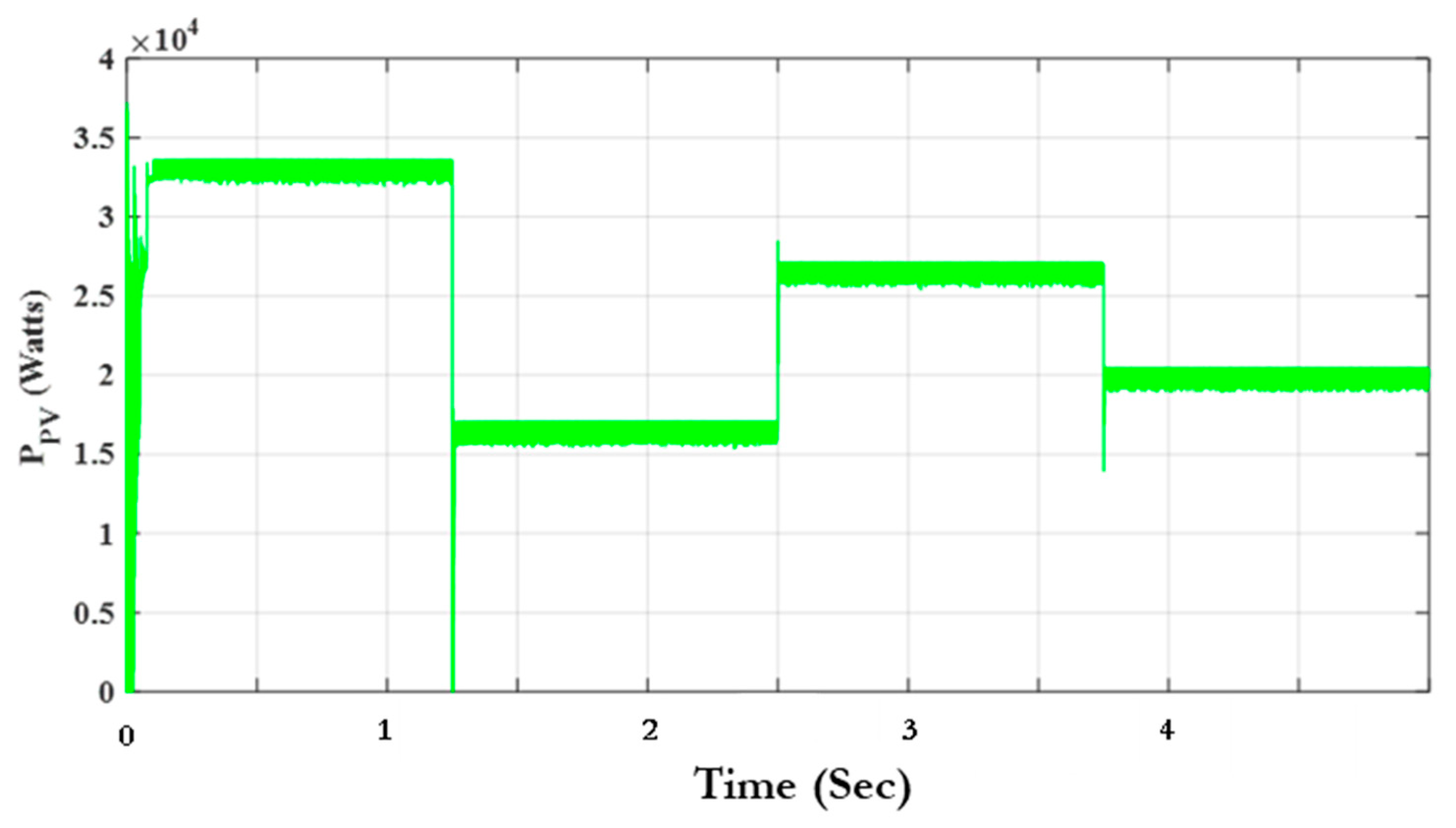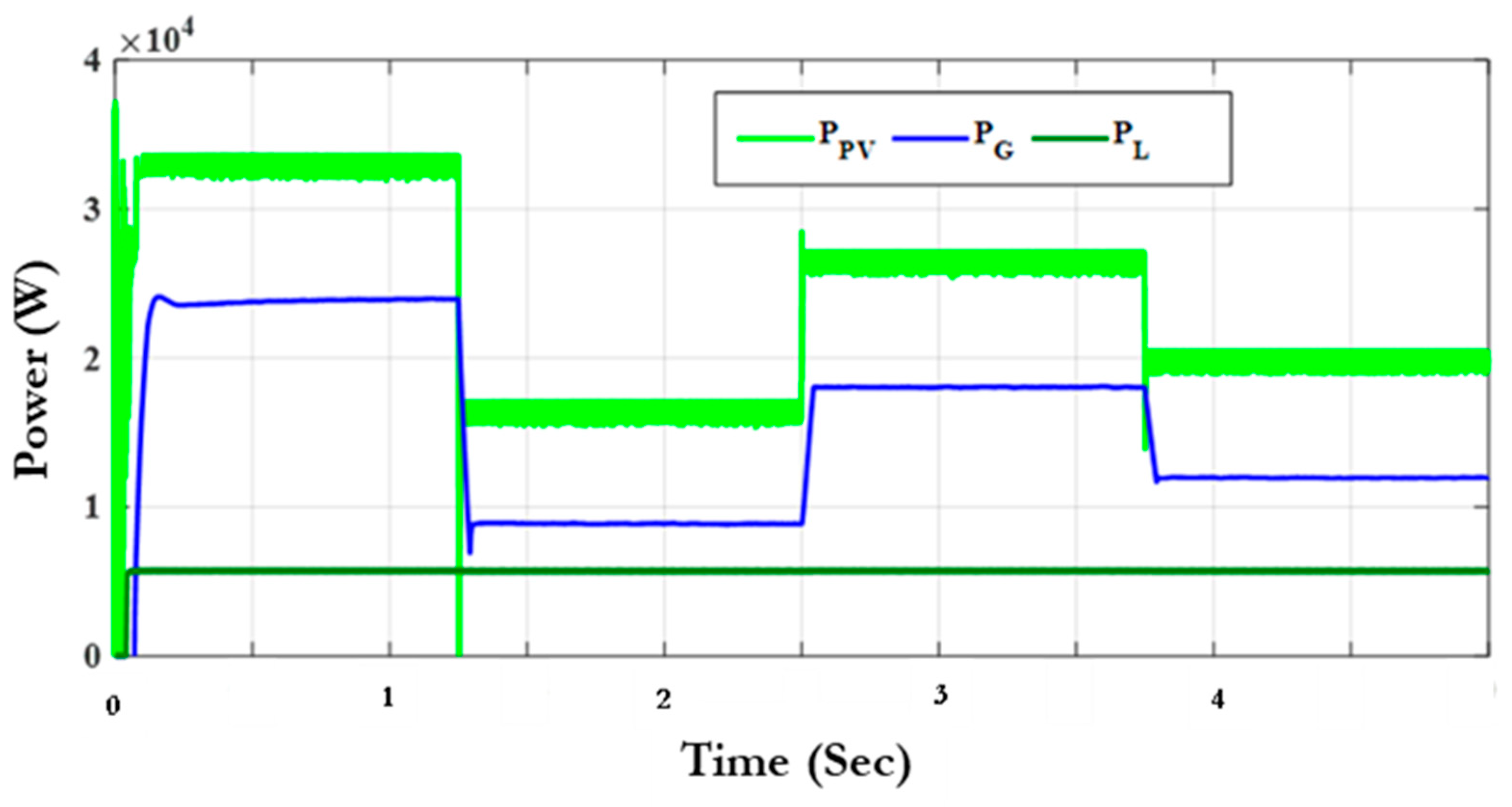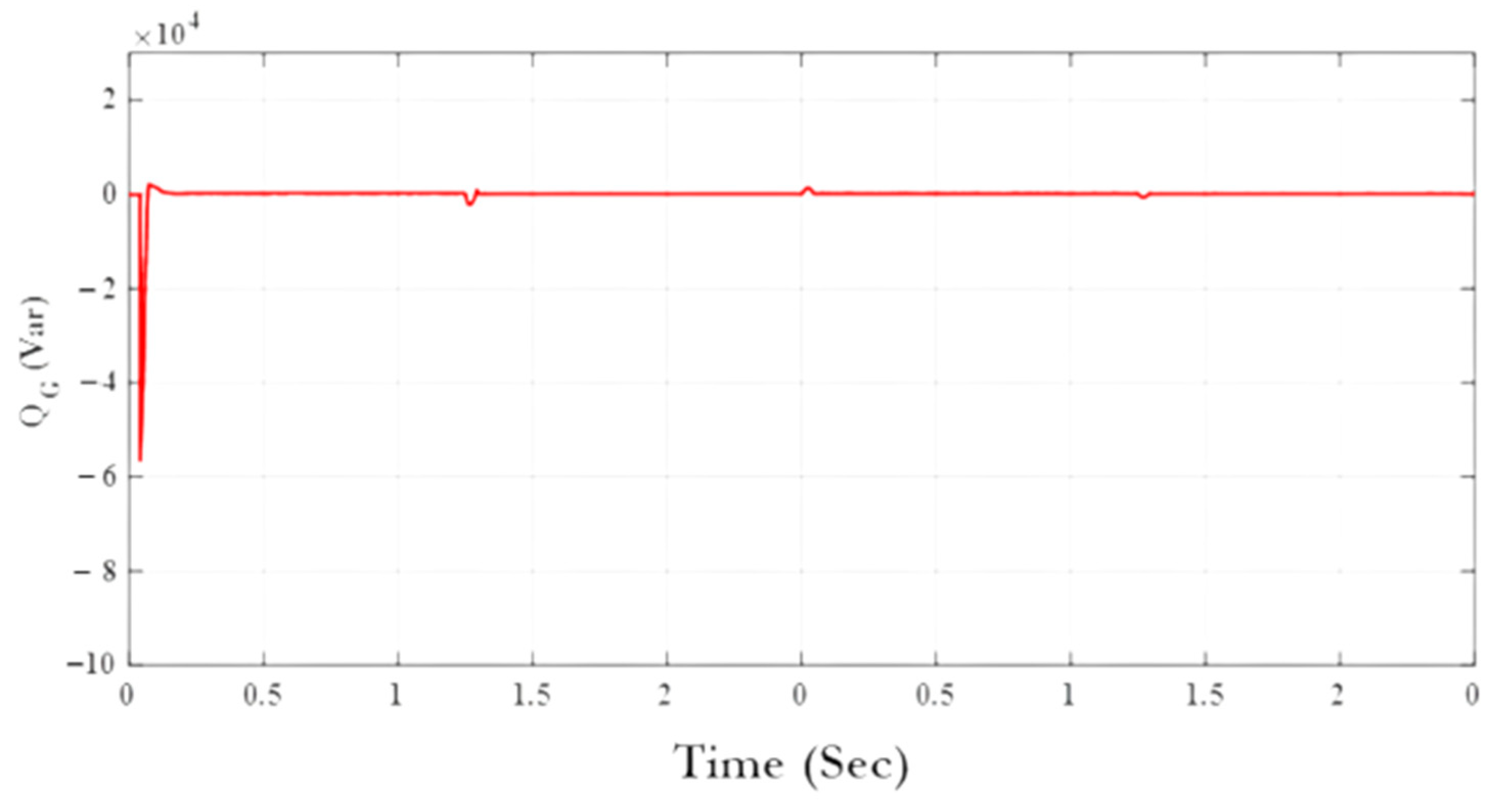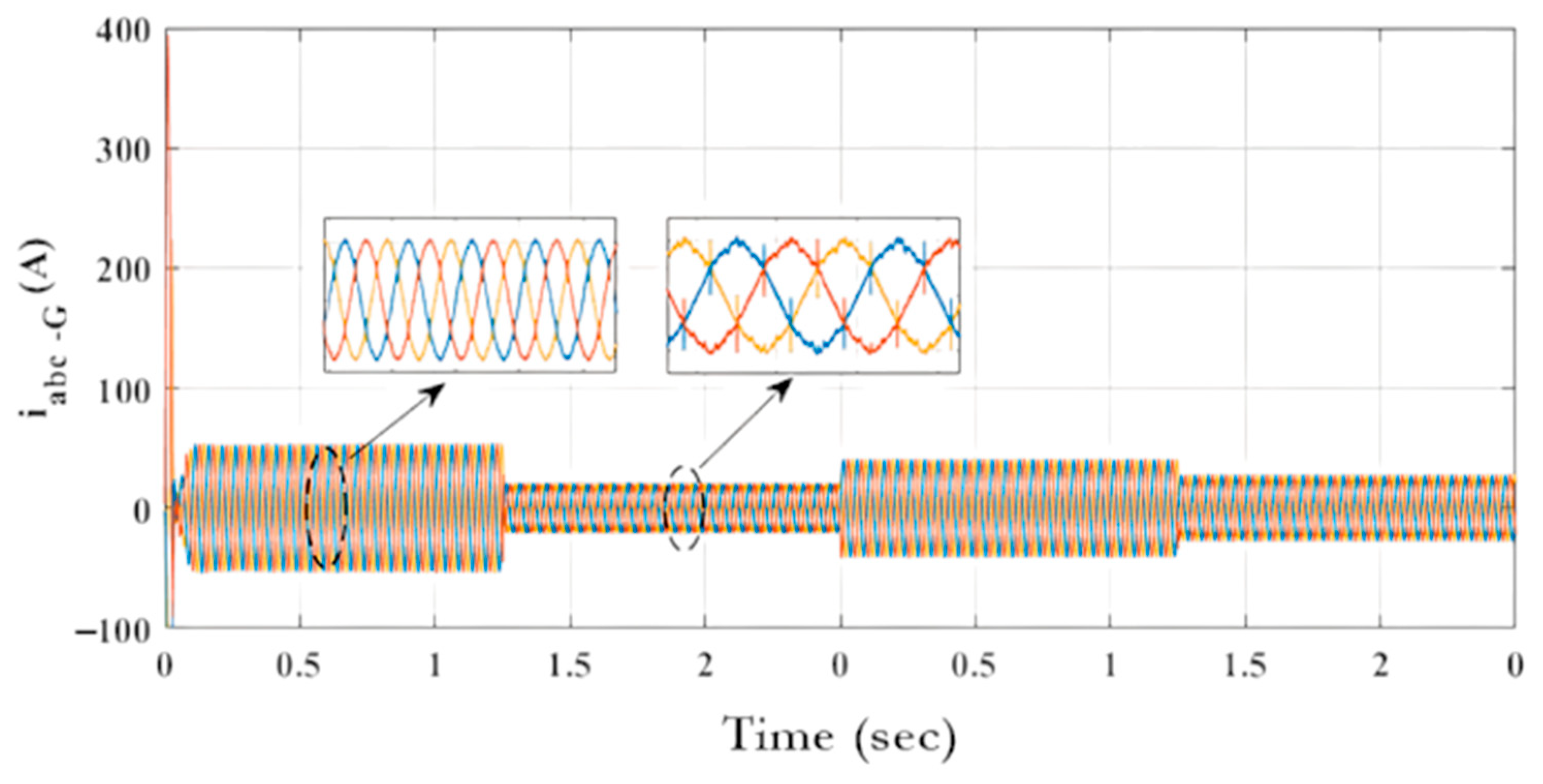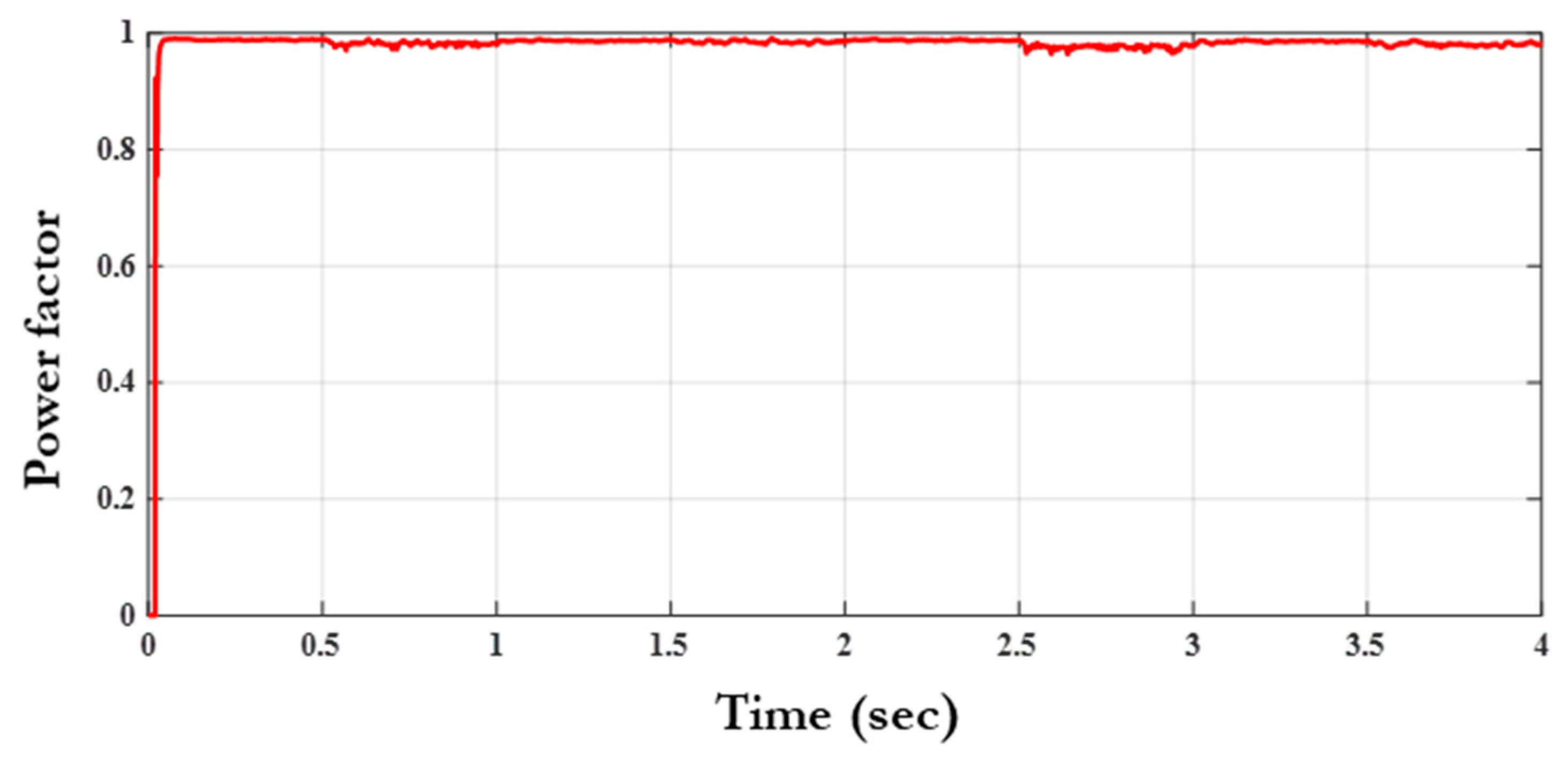1. Introduction
The need for electricity worldwide has grown dramatically, particularly in remote rural areas and mountains. In addition to coal, oil, and gas, other fossil fuels are also used to generate electricity and heat. However, these fuels are the main emitters of CO
2, and, unlike renewable sources, their supply is limited. Photovoltaic (PV) systems have attracted the interest of many due to their low cost. These systems have a number of advantages, not least their eco-friendliness and their ability to offer a high level of reliability. The energy produced can be stored in batteries for later use if it is not used immediately. However, solar panels have limited efficiency, and their current and voltage are influenced by variable external factors such as temperature and the amount of solar radiation received [
1].
Researchers have long seen grid-connected systems as a hurdle to overcome. A grid-connected photovoltaic (PV) system is an installation that converts solar energy into electricity to supply a power grid, while integrating other renewable energy sources to ensure continuous and stable production.
PV penetration has several impacts, including synchronization, protection, harmonic injection, and unbalanced currents. Grid connections are made via power electronic converters. Electronic power converters must be properly managed for grid connections. Control techniques include decoupled, direct power, predictive, synergetic, and sliding modes. Controlling the power factor is a critical task for grid-connected systems [
2]. As a result, several phase lock loop (PLL) control methods have been investigated during the last few decades.
The paper is structured as follows: In the first section, an introduction to the proposed work is given.
Section 2 discusses the structure of the proposed system with Fuzzy-PLL that is illustrated in
Figure 1. In
Section 3, the Synchronous Reference Frame theory is explained along with its associated equations, followed by a detailed explanation of the design of the PI controller used in the SRF-PLL system. Finally,
Section 4 presents and explains the simulation results of the overall PV-fed grid-connected system with Fuzzy-PLL. Additionally, grid synchronization of the PV-fed grid-connected system under amplitude variation and frequency variations is explained. It also provides a performance analysis of multilevel inverters and different types of PLL [
3,
4].
2. Modeling and Features of the PV Panel
Photovoltaic panels transform solar irradiation into useful electricity. Several analogous circuits have been found in the literature, with varying numbers of components employed. The most common design employs a single diode. This circuit is utilized because it is simple and can illustrate the nonlinear behavior of solar panels [
4]. The electrical model is presented in
Figure 2 [
5].
The following table shows the technical specifications of the 1SOLTECH 1STH-350-WH photovoltaic panel (
Table 1).
2.1. Effect of Solar Radiation
Photovoltaic (PV) systems appear to have non-linear characteristics that are affected by many variables such as temperature and solar radiation [
6]. The efficiency of the panel increases with the amount of solar radiation at a given temperature, and the current produced by the panel depends essentially on the intensity of solar radiation, as shown in
Figure 3.
2.2. Effect of Temperature
Temperature has a negative influence on the power output of the PV panel for a fixed amount of solar radiation. As the cell temperature increases,
Figure 4 shows that the output power of the panel decreases [
6,
7].
3. Command MPPT
The principle of MPPT (Maximum Power Point Tracking) control is to find the optimum operating point for a solar panel (or other energy source) in order to maximize the electrical power delivered. The optimum operating point is the point at which the solar panel produces the possible electrical energy, depending on environmental conditions such as solar irradiation, temperature and connected load [
8,
9].
The basic idea behind MPPT control can be summed up as modifying the impedance seen at the solar panel terminal. This is performed by adjusting the duty cycle D of the DC-DC converter connected to the panel. The converter is an electronic device that regulates the electrical power produced by the solar panel, making it compatible with the required load voltage. By using different control algorithms, variations in environmental conditions can be monitored in real time and the duty cycle D adjusted to keep the solar panel at its optimum operating point. The aim is to continuously optimize the conversion of solar energy into electrical energy, thereby maximizing the overall efficiency of the photovoltaic system. In this article, fuzzy logic is used to control grid-connected photovoltaic systems.
In this section, we present a fuzzy controller based on the principle of perturbation and observation.
Figure 5 shows the schematic diagram of the P&O Fuzzy controller applied to the system PV [
10,
11].
The input variables of the fuzzy block will be ΔP and ΔV defined by the following equations:
Figure 6 illustrates the membership functions of the input and output variables for the fuzzy logic block.
4. Grid-Connected Photovoltaic System Modelling
Design a comprehensive system that includes a solar generator, converter, inverter, and load. The fundamental principle is to obtain as much electricity as possible from the solar panel. MPPT can be achieved using one of two approaches [
12,
13]. MPPT may be performed by control from either the generator or the grid. However, this study primarily focuses on grid-side control, which regulates the switching of an inverter to enhance its efficiency [
14]. The Network current control model that facilitates this approach is detailed in
Figure 7.
According to Equation (5), the term
introduced by the I
q loop into the I
d loop is considered as a disturbance input. In Equation 6, the term
introduced by the I
d loop into the I
q loop is also considered as a disturbance input [
11].
5. Results and Discussion
The overall system has been tested and evaluated under the profiles of solar irradiance and temperature shown in
Figure 8. The solar radiation changes from 1000 w/m
2, 500 w/m
2, 800 w/m
2, and 600 w/m
2 each 2 s, while the temperature is 25 °C.
Figure 9 shows the power generated by the photovoltaic panel for the two classical P&O algorithms and the P&O Flou based on the fuzzy logic approach.
In this study, a photovoltaic field with a total capacity of 33.5 kW, as previously described, was utilized. The fuzzy P&O algorithm was employed as the MPPT method, as illustrated in
Figure 10. The resulting energy supplied to the distribution network is presented in
Figure 11.
Figure 12 shows a comparison between the power generated by the photovoltaic array, the power fed into the distribution network and the power at the load.
For the inverter, the main function of the DC regulator is to maintain the DC bus voltage at its reference value of 800 V in order to generate a sinusoidal signal at the output close to that of the mains with the same frequency and phase as shown in
Figure 13. This effective control directly results in the Rapid Current Stabilization of the grid-connected PV system, which is clearly illustrated in
Figure 14.
The following figure shows the evolution of phase currents a, b and c at grid level. It is clear that these variations depend on the values of solar irradiation and temperature and, of course, on the load as shown in
Figure 15.
Figure 16 shows the variation in power factor as a function of time. It is also clear that this power factor is regulated to unity. This means almost zero THD distortion, which is generally desired for grid-connected electrical installations.
6. Conclusions
The configuration of the three-phase system is presented, along with the simulation results. Several tests were conducted to simulate the system’s performance. The fuzzy P&O MPPT system guarantees a fast response time with very low steady-state error and demonstrates its robustness to atmospheric variations. The main advantage of the system is its ability to adapt to both reactive and active power, resulting in a unity power factor on the grid side. We plan to improve our grid-connected three-phase photovoltaic system by integrating other DC-DC and DC-AC converter topologies. This development will be based on intelligent methods such as fuzzy logic and artificial neural networks.
This article paves the way for other areas of research:
Real-time implementation for the system under study.
Study the possibility of integrating other types of advanced converters, such as MIMO (multi-input, multi-output) converters.
Author Contributions
Conceptualization, Z.M., T.K., E.O.A. and T.B.; methodology, Z.M., T.K., E.O.A. and T.B.; software, Z.M., T.K., E.O.A. and T.B.; validation, Z.M., T.K.,E.O.A. and T.B.; formal analysis, Z.M., T.K., E.O.A. and T.B.; writing—original draft preparation, Z.M., T.K.,E.O.A. and T.B.; writing—review and editing, Z.M., T.K., E.O.A. and T.B.; All authors have read and agreed to the published version of the manuscript.
Funding
Team of Embedded Systems, Renewable Energy and Artificial Intelligence—National School of Applied Sciences, Mohammed First University, Oujda 60000, Morocco.
Institutional Review Board Statement
Not applicable.
Informed Consent Statement
Not applicable.
Data Availability Statement
Data is contained within this article.
Conflicts of Interest
The authors declare no conflict of interest.
References
- Notton, G.; Nivet, M.L.; Voyant, C.; Paoli, C.; Darras, C.; Motte, F.; Fouilloy, A. Intermittent and stochastic character of renewable energy sources: Consequences cost of intermittence and benefit of forecasting. Renew. Sustain. Energy Rev. 2018, 87, 96–105. [Google Scholar] [CrossRef]
- Edenhofer, O.; Hirth, L.; Knopf, B.; Pahle, M.; Schlömer, S.; Schmid, E.; Ueckerdt, F. On the economics of renewable energy sources. Energy Econ. 2013, 40, S12–S23. [Google Scholar] [CrossRef]
- Mahdavi, M.; Vera, D. Importance of renewable energy sources and agricultural biomass in providing primary energy demand for Morocco. Int. J. Hydrogen Energy 2023, 48, 34575–34598. [Google Scholar] [CrossRef]
- Hassaine, L.; Bengourina, M.R. Control technique for single-phase inverter photovoltaic system connected to the grid. Energy Rep. 2020, 6, 200–208. [Google Scholar] [CrossRef]
- Bhattacharyya, S.; Samanta, S.; Mishra, S. Steady output and fast tracking MPPT (SOFT-MPPT) for P&O and InC algorithms. IEEE Trans. Sustain. Energy 2020, 12, 293–302. [Google Scholar]
- Yang, Y.; Blaabjerg, F. A modified P&O MPPT algorithm for single-phase PV systems based on deadbeat control. In Proceedings of the sixth IET International Conference on Power Electronics, Machines and Drives (PEMD 2012), Bristol, UK, 27–29 March 2012; IET: Stevenage, UK, 2012; pp. 1–5. [Google Scholar]
- Thakurta, S.G. A modified MPPT algorithm for single-phase grid connected PV system. In Proceedings of the 2020 National Conference on Emerging Trends on Sustainable Technology and Engineering Applications (NCETSTEA), Durgapur, India, 7–8 February 2020; IEEE: Piscataway, NJ, USA, 2020; pp. 1–6. [Google Scholar]
- Arunkumari, T.; Indragandhi, V.; Sreejith, S. Topologies of a DC–DC Converter for Micro-Grid Application and Implementation of Parallel Quadratic Boost Converter. In Advances in Smart Grid and Renewable Energy; Springer: Singapore, 2018; pp. 633–644. [Google Scholar]
- Yang, Y.; Bremner, S.; Menictas, C.; Kay, M. Battery energy storage system size determination in renewable energy systems: A review. Renew. Sustain. Energy Rev. 2018, 91, 109–125. [Google Scholar] [CrossRef]
- Fannakh, M.; Elhafyani, M.L.; Zouggar, S. Fuzzy logic approach to improve the performances of grid-connected photovoltaic power system. In Proceedings of the 2018 Sixth International Renewable and Sustainable Energy Conference (IRSEC), Rabat, Morocco, 5–8 December 2018; IEEE: Piscataway, NJ, USA, 2018; pp. 1–6. [Google Scholar]
- Fannakh, M.; Elhafyani, M.L.; Zouggar, S.; Mokhtari, M.; Benzaouia, S. A Decoupled Control Study of a Grid-Connected Photovoltaic Power System. In Proceedings of the International Conference on Electronic Engineering and Renewable Energy, Saidia, Morocco, 15–17 April 2018; Springer: Singapore, 2018. [Google Scholar]
- Balcerak, M.; Zeńczak, M. Inverters for photovoltaic systems–comparative analysis. Przegląd Elektrotechniczny 2017, 93, 166–169. [Google Scholar] [CrossRef]
- Carvajal, J.; Chen, G.; Ogmen, H. Fuzzy PID controller: Design, performance evaluation, and stability analysis. Inf. Sci. 2000, 123, 249–270. [Google Scholar] [CrossRef]
- Sarra, M.; Gaubert, J.P.; Chaoui, A.; Krim, F. Control strategy of a transformerless three phase shunt hybrid power filter using a robust PLL. In Proceedings of the IECON 2012-38th Annual Conference on IEEE Industrial Electronics Society, Montreal, QC, Canada, 25–28 October 2012; IEEE: Piscataway, NJ, USA, 2012. [Google Scholar]
| Disclaimer/Publisher’s Note: The statements, opinions and data contained in all publications are solely those of the individual author(s) and contributor(s) and not of MDPI and/or the editor(s). MDPI and/or the editor(s) disclaim responsibility for any injury to people or property resulting from any ideas, methods, instructions or products referred to in the content. |
© 2025 by the authors. Licensee MDPI, Basel, Switzerland. This article is an open access article distributed under the terms and conditions of the Creative Commons Attribution (CC BY) license (https://creativecommons.org/licenses/by/4.0/).
